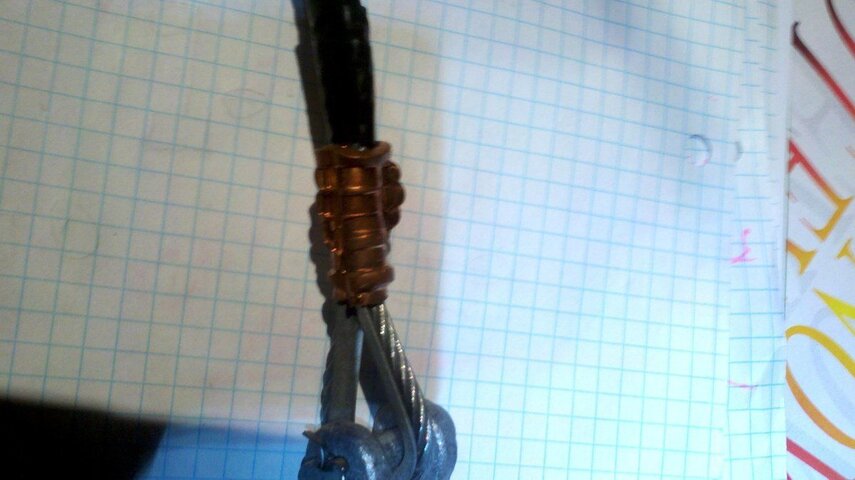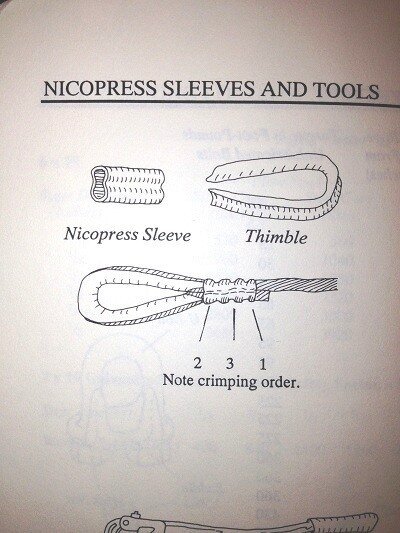Preface: The name
Nicopress has become the generic name for all sleeves.
It is inaccurate and confusing. Just like
Crosby is the name of a company,
not the piece of hardware. The same is true for
Nicopress. And just like
Crosby, I have found that people, when ordering
Nicopress, are unwilling to
actually pay for
Nicopress.
Depending on your definition of an Off Brand, it's entirely possible that
National Telephone IS the off brand.
The other company that makes Oval
Swage Fittings is the Loos company out of
Naples Florida. While I don't have any hard data at my fingertips (it is
Sunday morning after all) I know that we sell at least 5 times as many Loos
sleeves as we do National Telephone. They cost considerably less.
Put the 2 brands of sleeves side by side on a table and you won't be able to
tell which is which.
The difference in failure rate between the 2 manufacturers is somewhere
around zero.
But there is a difference in size between the 2 companies whether you can
see it or not. If the sleeve,
crimping tool and go/no-go
gauge do not all
come from the same manufacturer, there is a possibility of getting an
inaccurate reading from the
gauge.
And there is a difference in installation requirements. On the sizes we are
most likely to use, the National Telephone people require 3 crimps. On the
same size sleeves the Loos company requires 4.
The difference between copper and aluminum? Age old debate.
Failure rate difference due to material or manufacturers defects.
Negligible.
Failure rate difference due to improper installation. Negligible...Humans
screw up copper or aluminum sleeves pretty much the same.
Material difference....a little. Copper is harder. Aluminum may not
withstand the test of time as there may be some corrosion between the
aluminum and the galvanized steel. But I'm told that the process will take
about 75 years, so I'm not too worried about it (I won't be here)
Shock loading...I'm told that aluminum may crack more easily under a
shock
load. Might be true BUT...both manufacturers recommend that both styles of
sleeve be replaced after a
shock load has been applied.
So......The common practice in the industry right now is to use copper. Or
zinc coated copper (copper oxidizes, after all) OK. I'll sell you copper.
or zinc coated copper. Or, when someone finds a problem with zinc and they
decide that a platinum coating over the zinc coating on the copper sleeve is
the way to go, then I'll sell you that one too.




